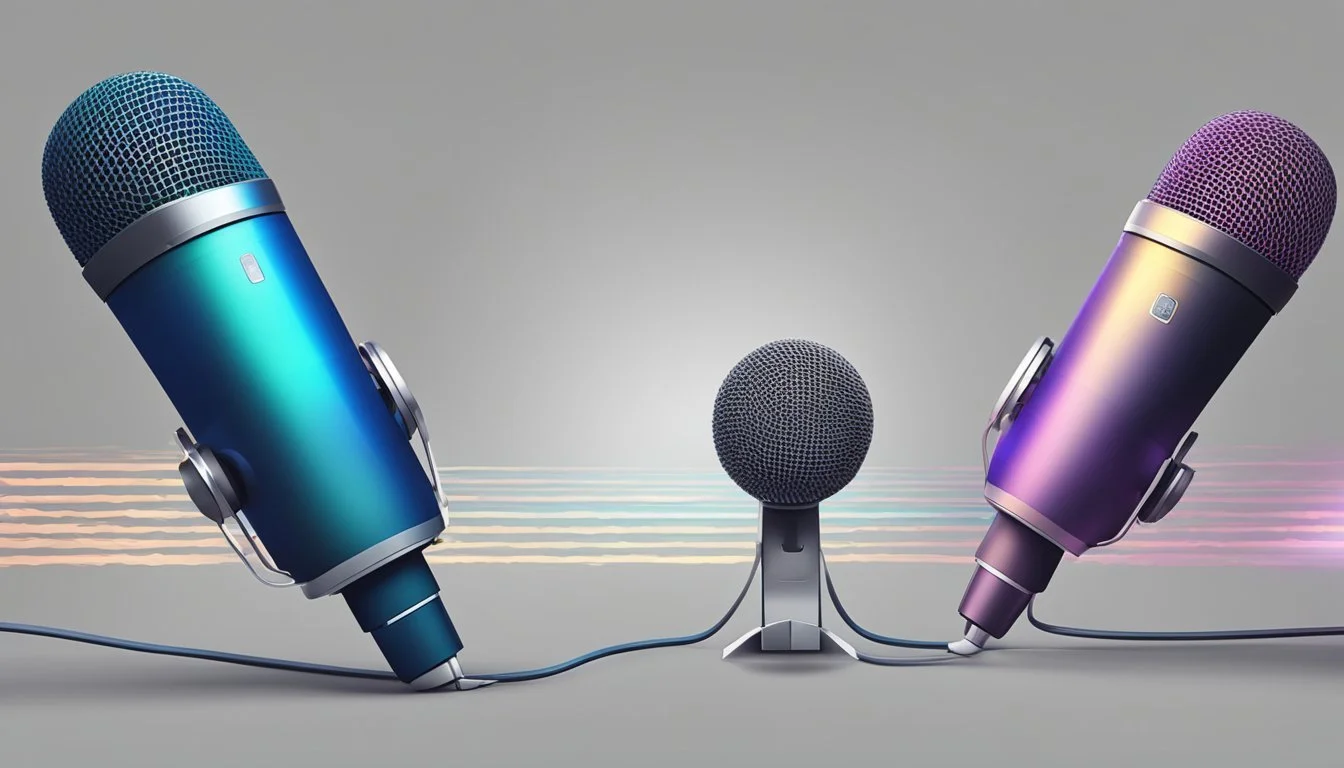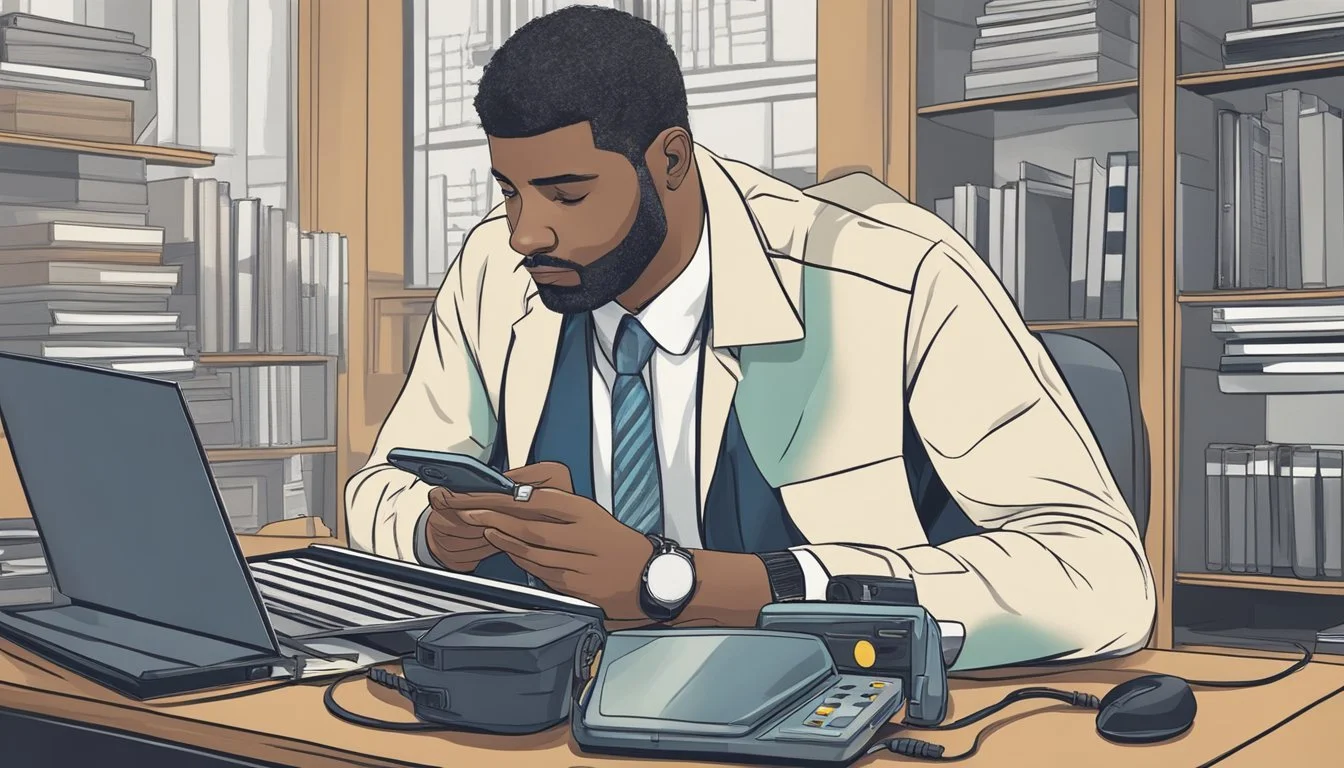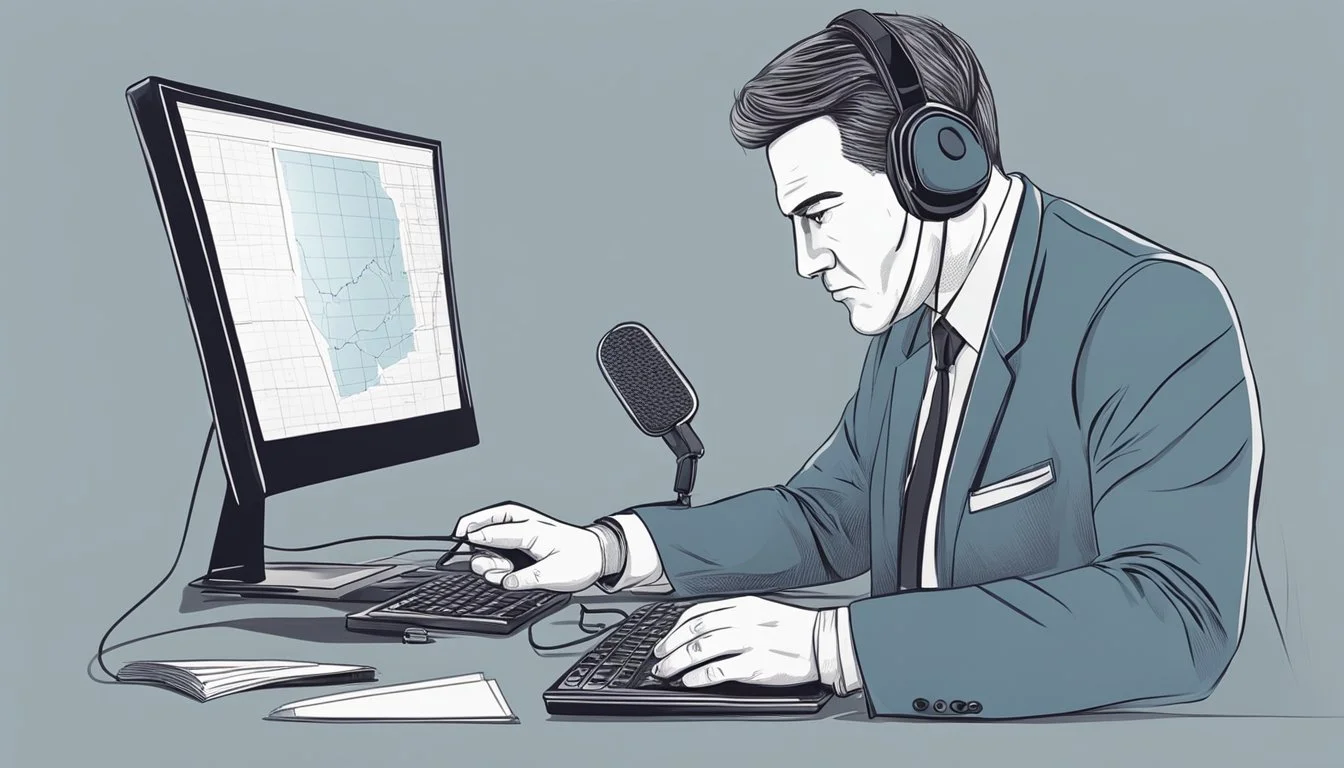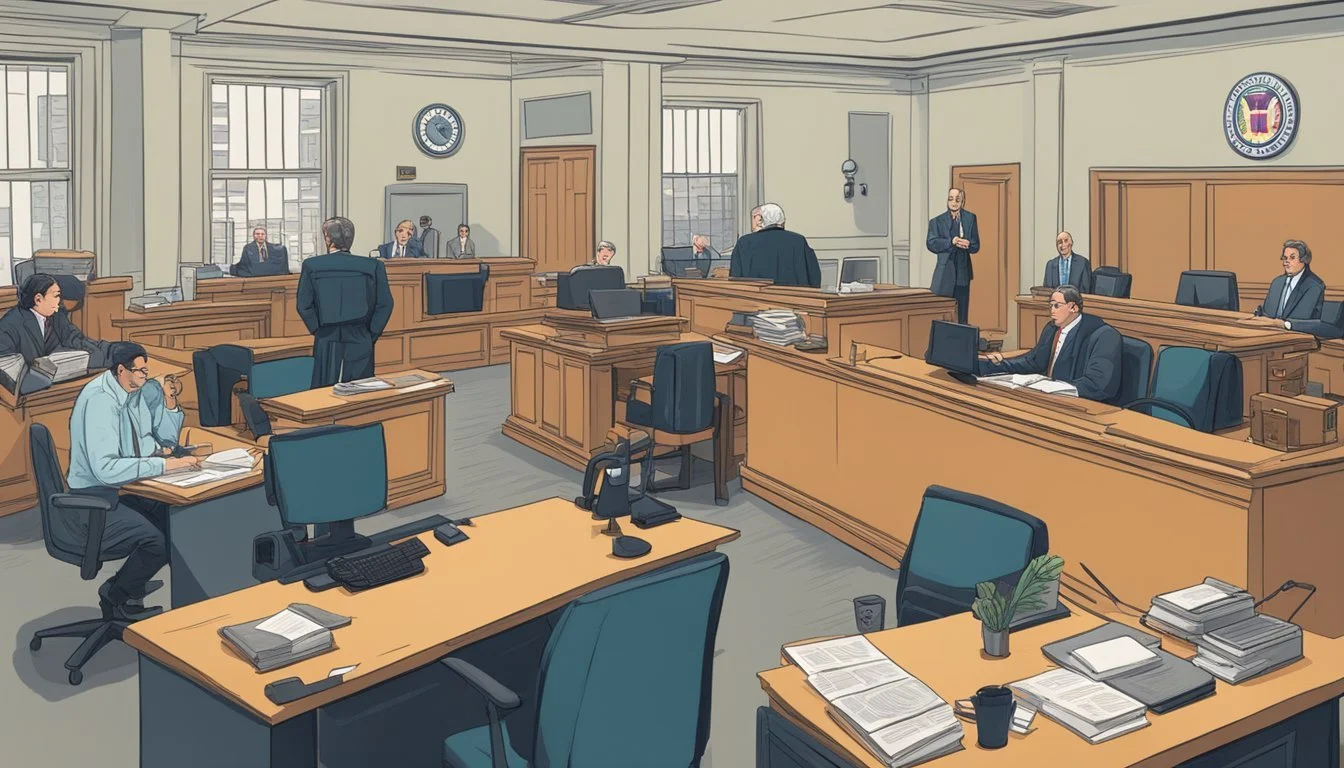Conviction: Audio Investigation Leads to Visual Vindication
New Evidence Clears Suspect
Audio and video evidence play crucial roles in modern criminal investigations and courtroom proceedings. Prosecutors and defense attorneys increasingly rely on recorded material to build their cases and establish facts. The integration of audio and visual recording technologies has transformed the justice system, enabling more accurate reconstructions of events and enhanced scrutiny of witness testimonies.
Recent advancements in forensic audio and video analysis have led to groundbreaking developments in criminal cases. Experts now employ sophisticated techniques to enhance recordings, isolate specific sounds, and clarify visual details that may have initially gone unnoticed. These methods have proven instrumental in both convicting guilty parties and exonerating the innocent.
The case of "Conviction: Audio Investigation Leads to Visual Vindication" exemplifies the power of combining audio and visual evidence in pursuit of justice. What began as an audio-based inquiry ultimately resulted in visual confirmation, demonstrating the complementary nature of these investigative tools. This case highlights the importance of thorough examination and cross-referencing of multiple forms of evidence in criminal proceedings.
The Intersection of Audio and Visual Evidence
Audio and visual evidence play crucial roles in modern legal proceedings. When combined, these forms of evidence provide a comprehensive view of events, enhancing the clarity and impact of case presentations.
Synergy of Sound and Sight in Legal Proceedings
Audio recordings capture verbal exchanges, ambient sounds, and tonal nuances. Visual evidence, such as photographs and video footage, documents physical actions and environments. Together, they create a more complete narrative.
In courtrooms, prosecutors and defense attorneys utilize audio-visual presentations to reconstruct crime scenes. This approach allows juries to experience events through multiple sensory channels.
Expert witnesses often rely on audio-visual tools to explain complex concepts. For instance, forensic analysts may use enhanced audio recordings paired with visual timelines to demonstrate the sequence of events in a crime.
Assessing the Impact of Combined Evidence on Jury Perception
Juries process information more effectively when it engages multiple senses. Audio-visual evidence tends to be more memorable and persuasive than written or verbal testimony alone.
Studies show that jurors are more likely to retain information presented through audio-visual means. This increased retention can significantly influence their decision-making process during deliberations.
However, the power of audio-visual evidence also raises concerns about potential bias. Judges must carefully consider the prejudicial effect versus probative value of such evidence before admitting it in trials.
Audio-visual recordings of witness statements or expert testimonies can also be used to challenge or corroborate live testimony, adding another layer of scrutiny to the trial process.
Audio Recording: A Power Tool in Investigations
Audio recordings serve as invaluable tools in criminal investigations, providing crucial evidence and insights. They capture spoken words, ambient sounds, and contextual details that can make or break a case.
Audio Evidence in Crime Scene Investigation
Police rely heavily on audio recordings during crime scene investigations. These recordings document witness statements, suspect interviews, and environmental sounds at the scene. Detectives use specialized equipment to capture high-quality audio, ensuring clarity and accuracy.
Audio evidence can reveal crucial details missed by visual inspection alone. Background noises may indicate the presence of additional witnesses or suspects. The tone and inflection in a person's voice can hint at their emotional state or potential deception.
Investigators often combine audio with video evidence to create a comprehensive record of the crime scene. This multi-layered approach enhances the overall understanding of events and strengthens the case for prosecution.
Nuts and Bolts of Handling Audio Recordings
Proper handling of audio recordings is essential to maintain their integrity as evidence. Law enforcement agencies follow strict protocols for collection, storage, and analysis of audio files.
Key steps in handling audio evidence include:
Recording using calibrated, high-quality devices
Documenting the chain of custody
Storing files in secure, tamper-proof systems
Creating backup copies for analysis and preservation
Forensic audio experts use specialized software to enhance recordings, isolate specific sounds, and authenticate the content. They can detect signs of tampering or editing, ensuring the recording's authenticity.
Challenges and Solutions in Audio Evidence Admissibility
Admitting audio evidence in court presents unique challenges. Defense attorneys may question the recording's authenticity or argue that it violates privacy rights. Prosecutors must demonstrate the evidence's relevance and reliability.
Courts consider several factors when determining admissibility:
Chain of custody documentation
Expert testimony on authenticity
Compliance with wiretapping and surveillance laws
Relevance to the case at hand
To overcome these challenges, investigators meticulously document every step of the audio evidence gathering process. They work closely with forensic experts to verify the recording's integrity and prepare compelling arguments for its admissibility.
Advances in technology have improved the reliability of audio evidence. Digital watermarking and blockchain-based systems now provide tamper-evident storage solutions, bolstering the credibility of recordings in court.
Navigating Legal Frameworks Governing Evidence
Audio-visual evidence in criminal investigations is subject to complex legal frameworks. These frameworks aim to balance the pursuit of justice with individual rights and privacy concerns.
Adherence to the Code of Criminal Procedure
The Code of Criminal Procedure outlines specific rules for collecting and presenting evidence in court. It dictates proper handling, chain of custody, and authentication procedures for audio-visual recordings.
Law enforcement must follow strict protocols when obtaining such evidence. This includes securing necessary warrants and documenting the collection process meticulously.
Courts scrutinize compliance with these procedures to ensure evidence admissibility. Failure to adhere to the code can result in evidence being deemed inadmissible, potentially impacting case outcomes.
Understanding the Fourth Amendment Implications
The Fourth Amendment protects against unreasonable searches and seizures, significantly impacting audio-visual evidence collection. It requires law enforcement to obtain warrants based on probable cause before recording private conversations or entering private property.
Exceptions exist for public spaces and consent scenarios. Courts carefully examine the circumstances under which recordings were obtained to determine Fourth Amendment compliance.
Technological advancements have prompted courts to reassess Fourth Amendment interpretations. This ongoing process aims to balance privacy expectations with law enforcement needs in the digital age.
Protecting Rights and Privacy: A Judicial Balancing Act
Courts play a crucial role in weighing the probative value of audio-visual evidence against potential privacy infringements. They consider factors such as the nature of the crime, the method of evidence collection, and the reasonable expectation of privacy.
Judges may exclude evidence if its prejudicial effect outweighs its probative value. This decision-making process involves careful consideration of constitutional rights and societal interests.
Courts also address issues of identification accuracy in audio-visual evidence. They evaluate factors like recording quality and potential biases to ensure fair trials and protect defendants' rights.
Video Evidence: Corroborating the Story Told by Sound
Video evidence provides visual confirmation of audio recordings, strengthening the overall case. It allows investigators and juries to see events unfold, adding another layer of verification to the narrative established by sound.
Establishing Authenticity and Accuracy of Video Records
Video evidence must undergo rigorous examination to ensure its authenticity and accuracy. Forensic experts analyze the footage for signs of tampering or editing. They examine metadata, file formats, and timestamps to verify the video's origin and timeline.
Technicians also assess the video quality, camera placement, and dimensions to understand any limitations in the footage. This process helps determine if the video accurately represents the events in question.
Surveillance footage often plays a crucial role in investigations. Experts carefully review these recordings, considering factors like camera angles and lighting conditions that may affect the interpretation of events.
Video Evidence in the Courtroom: Process and Impact
Presenting video evidence in court follows strict protocols. Attorneys must establish the chain of custody and demonstrate the footage's relevance to the case. They often call expert witnesses to explain technical aspects of the video and its analysis.
Video evidence can have a powerful impact on juries. It provides a visual representation of events, complementing witness testimony and other forms of evidence. Jurors can see actions unfold, potentially clarifying ambiguities in audio recordings or conflicting accounts.
Courts carefully consider the prejudicial effect of video evidence. Judges may limit or exclude footage that could unfairly influence the jury or violate legal standards. The admissibility of video evidence depends on its probative value outweighing any potential prejudice.
Tech-Savvy Investigations: Electronic Devices in Forensics
Electronic devices have revolutionized forensic investigations, providing crucial evidence in modern criminal cases. Digital forensics experts now play a vital role in analyzing data from computers, smartphones, and other devices to uncover critical information.
From Computers to Smartphones: Sourcing Evidence
Digital evidence comes from a wide range of electronic devices. Computers store vast amounts of data in files, emails, and browsing histories. Smartphones contain text messages, call logs, GPS locations, and app data. Tablets, smart watches, and even gaming consoles can yield valuable information.
Forensic tools extract and analyze this data, preserving its integrity for use in court. Specialized software recovers deleted files and decrypts hidden information. Cloud storage adds another dimension, allowing investigators to access data stored remotely.
As technology evolves, so do forensic techniques. New methods emerge to tackle challenges like encrypted devices and evolving storage formats.
The Role of Digital Forensic Experts in Modern Trials
Digital forensic experts are now essential in many criminal investigations and trials. They collect, preserve, and analyze electronic evidence using specialized tools and techniques. Their expertise helps reconstruct digital timelines and uncover crucial facts.
In court, these experts explain complex technical concepts to judges and juries. They present digital evidence clearly and authoritatively, often using visual aids to illustrate their findings.
Their testimony can be pivotal in cases involving cybercrime, fraud, or digital communications. As electronic evidence becomes more prevalent, the demand for skilled digital forensics experts continues to grow.
Courts increasingly rely on their expertise to ensure digital evidence is properly handled and interpreted throughout the legal process.
Legal Procedures and the Criminal Justice System
The criminal justice system relies on established legal procedures to ensure fair treatment and protect rights. These procedures govern how evidence is collected, presented, and evaluated throughout investigations and trials.
From Interrogations to Trials: Ensuring Justice
Law enforcement officers conduct interrogations to gather statements from suspects and witnesses. Suspects have the right to remain silent and request an attorney. Recorded interrogations help verify the voluntary nature of statements.
During trials, both prosecution and defense present evidence and arguments before a judge or jury. Witnesses testify under oath, subject to cross-examination. The burden of proof rests on the prosecution to prove guilt beyond a reasonable doubt.
Judicial magistrates oversee pre-trial proceedings, set bail, and issue warrants. They ensure proper procedures are followed and constitutional rights are protected throughout the process.
The Processes to Compel the Production of Things
Courts can issue subpoenas requiring individuals to testify or produce documents and other evidence. Search warrants allow law enforcement to search specific locations and seize relevant items.
Failure to comply with court orders can result in contempt charges. Judges may also suppress improperly obtained evidence.
These legal mechanisms help gather crucial information while balancing privacy rights and due process. Proper documentation and chain of custody procedures preserve the integrity of evidence for trial.
Technological Innovation and Regulation in Evidence
Rapid advancements in forensic technology have transformed evidence collection and analysis. These innovations bring improved accuracy but also raise concerns about privacy and proper implementation.
Harnessing Technology for Enhanced Accountability
Digital tools now play a crucial role in evidence gathering and verification. Body cameras worn by law enforcement officers provide visual records of interactions. Advanced DNA analysis techniques can extract usable profiles from smaller samples. Computer forensics allows investigators to recover deleted files and trace digital footprints.
Artificial intelligence assists in analyzing large volumes of data, identifying patterns human reviewers might miss. Blockchain technology ensures the integrity of digital evidence by creating tamper-proof audit trails. These technological innovations enhance accountability by providing more reliable and comprehensive evidence.
Proper training and protocols are essential to maximize the benefits of new forensic tools. Regular audits and independent oversight help maintain high standards and public trust in technologically-derived evidence.
Addressing the Issues of Privacy and Redaction in Digital Evidence
The proliferation of digital evidence raises privacy concerns. Recordings may capture sensitive personal information unrelated to investigations. Strict regulations govern the collection, storage, and use of digital data to protect individual rights.
Redaction tools allow removal of irrelevant or privileged information from digital evidence. Automated systems can blur faces or license plates in videos. Audio redaction software eliminates names or other identifiers from recordings.
Courts require authentication of digital evidence to ensure its integrity. Hash values and digital signatures verify files haven't been altered. Chain of custody documentation tracks who accessed evidence and when.
Balancing privacy protection with the needs of investigations remains an ongoing challenge. Clear policies on data retention and access help safeguard privacy while preserving valuable evidence.
Special Considerations for Vulnerable Witnesses and Suspects
Vulnerable witnesses and suspects require tailored approaches during investigative procedures. These individuals may face unique challenges that impact their ability to provide accurate information or participate fully in the process.
Test Identification Parades and Minor Witnesses
Test identification parades involving minor witnesses demand careful handling. Children's memory and perception differ from adults, necessitating age-appropriate methods.
Law enforcement should use specially trained officers to conduct these parades. The environment must be non-threatening and child-friendly to reduce anxiety.
Clear, simple instructions are crucial. Officers should avoid leading questions or suggestive language that may influence a child's choices.
Videotaping the process can help ensure fairness and provide a record for later review. Parents or guardians should be present, but instructed not to interfere.
Time is a critical factor. Parades should be conducted as soon as possible after the incident to maximize accuracy of recall.
Handling Cases with Suspects Having Intellectual Disabilities
Suspects with intellectual disabilities require specific accommodations during interviews and investigative procedures. Officers must be trained to recognize signs of cognitive impairment.
Communication should be clear, concrete, and free of complex language or abstract concepts. Questions need to be simple and direct.
Interviewers should allow extra time for responses and avoid rushing the suspect. Frequent breaks may be necessary to maintain focus and reduce stress.
The presence of a support person, such as a lawyer or social worker, can help ensure the suspect's rights are protected and they understand the process.
Officers must be aware that individuals with intellectual disabilities may be more susceptible to suggestion or coercion. Extra care is needed to avoid leading questions or pressure tactics.
Documentation of the suspect's comprehension level and any accommodations made is essential for legal proceedings.
Policy Reforms and Future of Evidence Handling
Reforms in evidence handling and policy changes aim to reduce wrongful convictions and strengthen the legal system. These efforts focus on improving forensic techniques and advocating for systemic reforms.
Examining Experimental Basis for Evolving Evidence Techniques
Forensic science continues to evolve, with new techniques undergoing rigorous testing. DNA analysis advancements have increased accuracy and sensitivity. Researchers are developing improved methods for fingerprint analysis and ballistics comparisons.
State governments are funding studies to validate emerging forensic practices. This ensures techniques meet scientific standards before courtroom use. Labs are implementing blind testing protocols to reduce bias in evidence examination.
Quality control measures now include regular proficiency testing for forensic examiners. This helps maintain high standards and identifies areas for improvement in evidence handling procedures.
Advocating for Reforms to Enhance The Legal System
Legal experts push for reforms to strengthen the rule of law and prevent miscarriages of justice. Some states have established conviction integrity units to review past cases for potential errors.
Key policy changes include:
Mandatory recording of interrogations
Improved eyewitness identification procedures
Enhanced discovery rules for sharing evidence
Many jurisdictions now require certification for forensic analysts. This ensures examiners meet professional standards in their field.
Legislatures are considering bills to increase funding for public crime labs. This aims to reduce backlogs and improve the quality of forensic work.
Impact of Publicity: Media, Internet, and Trials
The digital age has transformed how the public engages with high-profile legal cases. Media coverage and online platforms significantly influence public perception and can pose challenges to ensuring fair trials.
The YouTube Effect: Trials in the Age of Internet
YouTube and other video-sharing platforms have revolutionized access to trial information. Courtroom footage, once limited to brief news clips, is now readily available online. This allows viewers to scrutinize proceedings in unprecedented detail.
The internet's vast reach amplifies the impact of trial coverage. A 2021 Pew Research Center study found nearly 90% of Americans use digital platforms to access news. This widespread consumption of trial-related content can shape public opinion before juries are even selected.
Social media discussion of ongoing cases further complicates matters. Viral posts and hashtags can quickly spread information - or misinformation - about defendants and evidence. This digital chatter risks influencing potential jurors, even unintentionally.
Journalists and Public Interest vs. The Right to a Fair Trial
The tension between media coverage and fair trials is not new, but modern technology has intensified it. Journalists play a crucial role in informing the public about important cases. Their reporting serves the public interest and supports transparency in the justice system.
However, extensive pretrial publicity can potentially bias jury pools. Research shows media coverage of crimes often favors the prosecution's narrative. News reports frequently contain information that would be inadmissible in court.
Judges must balance the rights of the accused with press freedom. Gag orders and changes of venue are sometimes used to mitigate publicity's effects. Yet in high-profile cases, finding truly impartial jurors can be challenging.
Social media has further blurred lines between journalists and the public. Anyone can now broadcast opinions about ongoing trials to large audiences. This citizen journalism adds another layer of complexity to preserving defendants' rights in the digital age.
Best Practices for Collection and Handling of Evidence
Proper evidence collection and handling are crucial for maintaining case integrity. Following established protocols ensures admissibility in court and prevents contamination or loss of critical information.
Preservation of the Crime Scene and Physical Evidence
Securing the crime scene is the first priority. Officers must establish a perimeter and limit access to authorized personnel only. Protective gear like gloves and booties prevents contamination.
Photograph and document the scene before collecting evidence. Use sterile tools and containers for each item. Label everything with case number, date, time, location, and collector's name.
For digital evidence, create forensic images rather than accessing original files. Use write-blockers to prevent alterations. Package electronic devices to protect from damage and interference.
Chain of Custody: Ensuring Unbroken Documentation
Maintain detailed logs of every transfer and storage location of evidence. Each person who handles items must sign and date the chain of custody form.
Use tamper-evident packaging and seals. Store evidence in secure, climate-controlled facilities with restricted access.
Create an inventory system to track evidence locations. Conduct regular audits to verify proper storage and handling procedures are followed.
For digital files, use hash values to prove integrity. Document all analysis steps to show evidence hasn't been altered.
Conclusion
Audio forensics plays a crucial role in criminal investigations and legal proceedings. It provides valuable evidence that can lead to visual vindication of the wrongly accused.
Proper handling and processing of audio recordings are essential. Forensic experts must employ rigorous methodologies to ensure accuracy and reliability in their analyses.
Transparency in forensic procedures builds trust in the justice system. It allows for independent verification of results and helps prevent wrongful convictions.
The integration of audio evidence with visual data strengthens cases. This combination often reveals crucial details that may be missed when relying on a single sensory modality.
Advancements in technology continue to enhance the field of audio forensics. New tools and techniques improve the ability to authenticate recordings and extract vital information.
Winning exonerations through audio evidence highlights its importance. It underscores the need for continued research and development in this critical area of forensic science.









